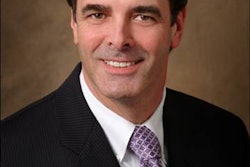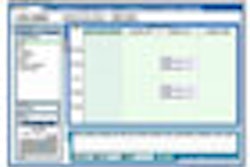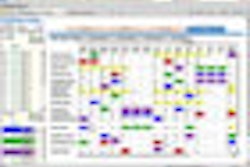Radiologists today are measured constantly, whether it is in the number of images they read, their relative value unit (RVU) activity, or their report turnaround times.
Of all the evaluations radiologists face, the ability to produce an accurate, relevant, and timely report is paramount.
"Everything we do in radiology is crystallized into that report," said Dr. Giles Boland in an interview with AuntMinnie.com. "Anything we do before then is working toward that goal. You can have the best scanner in the world, but if there is no report, it is worthless."
Boland is the medical director of teleradiology and vice chairman of radiology at Massachusetts General Hospital (MGH) in Boston.
Because the final report is so critical, healthcare institutions must devise strategic and practical workflow schemes that result in faster turnaround time for the report, Boland said. With increasing importance placed on subspecialization in radiology, structured reports are becoming a more useful tool to standardize information received by referring physicians.
"You can get three different radiologists to look at the same scan and they can give very different lengths and styles of interpretations," he said. "How is a referring physician to navigate through those variable styles?"
Structured reports
The referring doctor should be able to immediately see how the report is structured and find the key images to formulate his or her recommendations for the patient. "The only way it can be done is through a technology solution that is usually offered through voice recognition," Boland said.
In the online edition of European Radiology (March 8, 2008), Boland and colleagues wrote that only through the adoption of an integrated RIS/PACS and voice recognition system can report turnaround time be reduced and "consistently meet stakeholder expectations." Voice recognition systems "also offer the opportunity to create standardized, higher-quality reports," they wrote.
When a radiologist accesses an abdominal CT image, for example, he or she automatically retrieves a structured template when using voice recognition technology. Only abnormalities and pertinent findings need to be added to the template, along with other observations and, if necessary, recommendations.
The format prompts the radiologist to provide a structured report that is succinct. "The advantage of voice recognition is that it may be counterintuitive," Boland added, "because if radiologists have to edit that report, they naturally will shorten the number of words they put in it. They don't want to edit a report that is five pages long."
MGH has utilized voice recognition technology for the past 11 years. During that time, the facility has reduced the average time it takes staff to go from a preliminary report to final sign-off to approximately three hours. Total report turnaround -- the time from when a study is completed to when the final report is available on the system -- is 12 hours.
Pay-for-performance
As an added incentive, MGH awards a small bonus to radiologists who meet the institution's guidelines for report turnaround time. With pay-for-performance, MGH additionally has reduced report turnaround time to an average of four hours.
"The majority of the reports that are signed in this institution are within a matter of a few hours of the exam having been completed," Boland said, adding that the heightened expectations have not increased reading errors by radiologists. Instead of leaving work unfinished, radiologists also are more inclined to complete their assignments.
"There is the (amount of time between the) completion of the exam to preliminary report, which really hasn't changed much," Boland said. "That is a matter of an hour or two from when it is read to the time the exam is completed. The big change is the time from the preliminary report to final signing. For those groups with no residents or fellows, preliminary reports go away, so turnaround is even quicker."
MGH uses voice recognition technology from Burlington, MA-based Nuance Communications and previously collaborated with the firm's recent acquisition, Commissure, on decision support technology.
Pros and cons
Despite favorable reviews, not all radiology groups embrace voice recognition technology, saying that it takes too much time and delays workflow. Boland, however, opined that the software today is very good and requires a relatively short training period for users.
"Radiologists have to understand what their work product is -- and that is ultimately the radiology report," he said. "The clear enhancement of value in that report is when you add voice recognition, because you can get it out quicker and remove that whole redundant route with transcriptionists. You also can structure it with macros and templates, shorten the report, make it more succinct, and the whole report turnaround time is faster."
By Wayne Forrest
AuntMinnie.com staff writer
April 24, 2008
Related Reading
White noise may improve accuracy of SR system, November 27, 2007
Implementing SR before a hospital mandates gives radiology practice upper hand, November 27, 2007
Keys to a successful voice recognition implementation, July 12, 2007
ARRS study: Gender differences affect speech recognition accuracy, May 8, 2007
Speech recognition cuts report turnaround times, May 4, 2007
Copyright © 2008 AuntMinnie.com



















